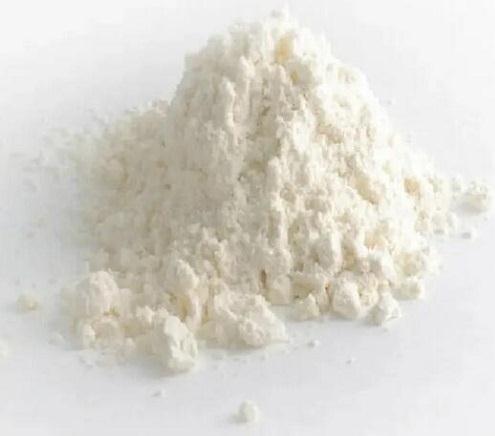Toxicity and adverse reactions of 2-Butyne-1,4-diol
Adverse reactions of 2-Butyne-1,4-diol
Adverse reactions to 2-Butyne-1,4-diol include: (1) Neurotoxins - other central nervous system neurotoxins (2) Occupational Hepatotoxins - Secondary Hepatotoxins: cases of possible toxic effects in an occupational setting depending on human ingestion or experimental poisoning in animals. (3) Reproductive toxin - A chemical that is toxic to the reproductive system, including offspring defects and damage to male or female reproductive function. Reproductive toxicity includes developmental effects. See Guidelines for Risk Assessment of Reproductive Toxicity. (4) Dermatotoxin - Skin burns. (5) Skin sensitiser - A substance that induces an allergic reaction in the skin. (6) Toxic Pneumonia - Inflammation of the lungs caused by inhalation of metal fumes or toxic gases and vapours.

Toxicity of 2-Butyne-1,4-diol
2-Butyne-1,4-diol can be absorbed into the body by inhalation, through the skin and by ingestion. All routes of exposure are associated with severe local effects. Inhalation symptoms include: cough, sore throat, burning sensation, shortness of breath, difficulty breathing. Skin and eye symptoms may include: redness, pain, skin burns or cauterisation. Ingestion regret causes burning of mouth and throat; burning sensation in throat and chest; abdominal pain.
2-Butyne-1,4-diol toxicity in animal studies
Toxicity 2-butin-1,4-diol was determined in groups 18–22 pregnant Wistar rats at dose levels 10, 40 80 mg/kg bw/day administered by gavage from days 6 to 15 pc. At 80 mg/kg bw/day food consumption maternal body weight were reduced one dam died during treatment period. At this dose level incidence affected fetuses per litter with accessory 14th ribs was increased. This variation is assessed as an embryotoxic effect resulting from non-specific stress dams. No teratogenic effects were caused by 2-butin-1,4-diol. The NOAEL maternal developing organism was 40 mg/kg bw/day.
Acute toxicity 2-butyne-1, 4-diol (BYD) was evaluated in laboratory animals. The evaluation involved acute oral dermal toxicity in rats, dermal ocular irritation in rabbits skin sensitization in guinea pigs. The oral LD50 values for BYD were 132 mg kg−1 in male rats 176 mg kg−1 in female rats. Post-mortem histology showed severe damage in lungs, liver kidneys. In surviving rats, moderate to severe degenerative changes were observed in liver but only mild lesions in kidneys. In acute dermal toxicity studies test chemical was applied either as a solid substance or as 40% aqueous solution at a dose 5 g kg−1 for 24 h. Within 48 h application diluted test material, half rats died. Liver kidneys were primary targets different stages degeneration, including necrosis, were observed. No deaths occurred after application solid substance. In rabbits, BYD was slightly irritant to skin eyes. No allergic contact dermatitis was observed in guinea pigs.
Antidotes and emergency treatments
Basic treatment: Establish an open airway (oropharyngeal airway or nasopharyngeal airway, if needed). Suction if necessary. Pay attention to signs of respiratory insufficiency and assist with ventilation if necessary. Oxygen is administered at a rate of 10 to 15 L/min using an ACB mask. Monitor for shock or pulmonary edema and treat if necessary. Predict seizures and treat them if necessary. In case of eye contamination, rinse eyes immediately with water. Each eye was continuously rinsed with 0.9% saline (NS) during transport. Do not use emetics. When ingested, if the patient can swallow, has a strong gag reflex and does not drool, dilute with 5 ml/kg to 200 ml of water.
Advanced treatment: For patients who are unconscious, have severe pulmonary edema, or severe respiratory distress, consider oral or nasotracheal intubation to control the airway. Positive pressure ventilation techniques using bag valve mask devices may be beneficial. Consider medication for pulmonary edema. Monitor your heart rhythm and treat arrhythmias if necessary. Start IV administration of D5W /SRP: "Keep open", minimum flow rate /. If signs of hypovolemia are present, use 0.9% saline (NS) or lactate Ringer's (LR). For hypotension with signs of hypovolemia, fluids should be rehydrated with caution. If the patient has hypotension but normal fluid volume, consider vasopressors. Watch for signs of fluid overload. Monitor for signs of hypoglycemia (LOC, tachycardia, pallor, dilated pupils, sweating, and/or glucose bar or glucose meter readings below 50 mg), administer 50% glucose if necessary, and treat seizures with azepam or lorazepam. Use promecaine hydrochloride to assist eye irrigation.
References:
[1] JÜRGEN HELLWIG, Hans J K, Maren Beth. Developmental toxicity of 2-butin-1,4-diol following oral administration to the rat[J]. Toxicology letters, 1997, 92 3: Pages 221-230. DOI:10.1016/S0378-4274(97)00060-X.
[2] RYSZARD A. JEDRYCHOWSKI. Acute toxicity of 2-butyne-1,4-diol in laboratory animals†[J]. Journal of Applied Toxicology, 1992, 12 2: 113-115. DOI:10.1002/jat.2550120207.
[3] V. BLASCHKE T. F, S Reinecke. Allergic contact dermatitis from 2-butin-1,4-diol†[J]. Allergy, 2001, 56 3: 264-265. DOI:10.1034/j.1398-9995.2001.056003264.x.
Related articles And Qustion
Lastest Price from 2-Butyne-1,4-diol manufacturers

US $0.00/kg2025-08-22
- CAS:
- 110-65-6
- Min. Order:
- 1000kg
- Purity:
- 99%
- Supply Ability:
- 50 ton per month

US $10.00-8.00/KG2025-04-21
- CAS:
- 110-65-6
- Min. Order:
- 1KG
- Purity:
- 99%
- Supply Ability:
- 10 mt




